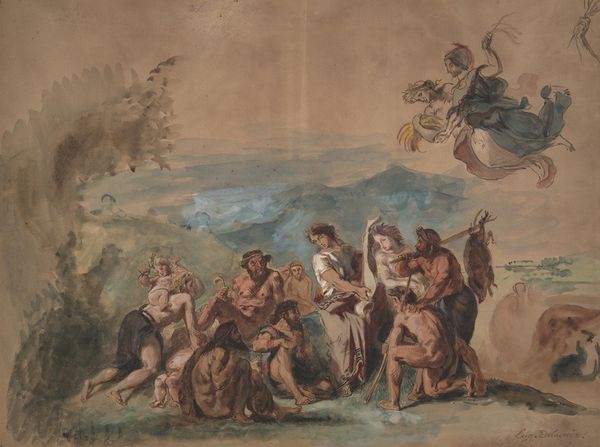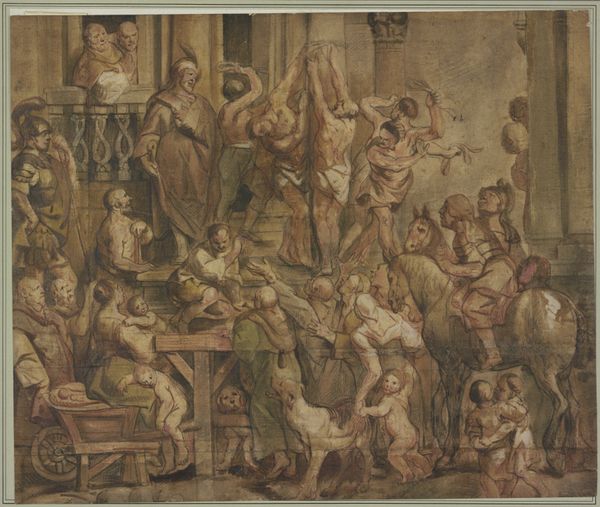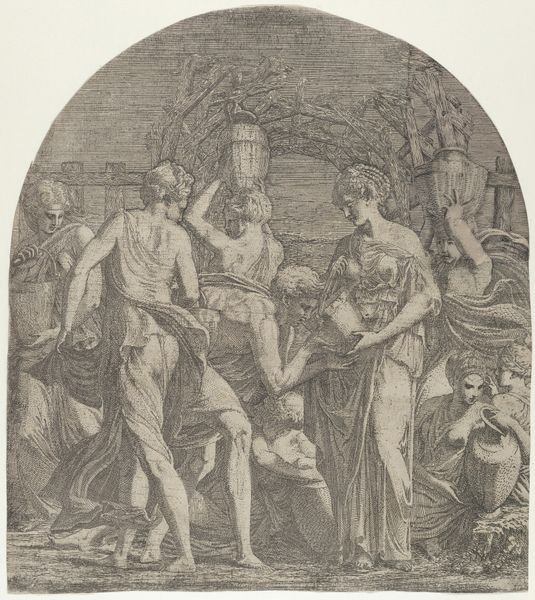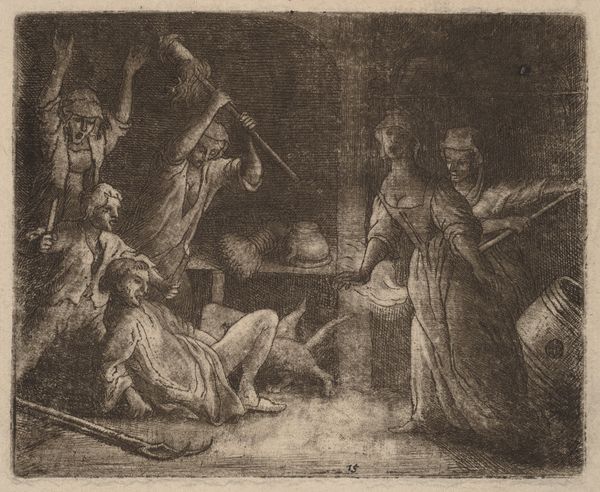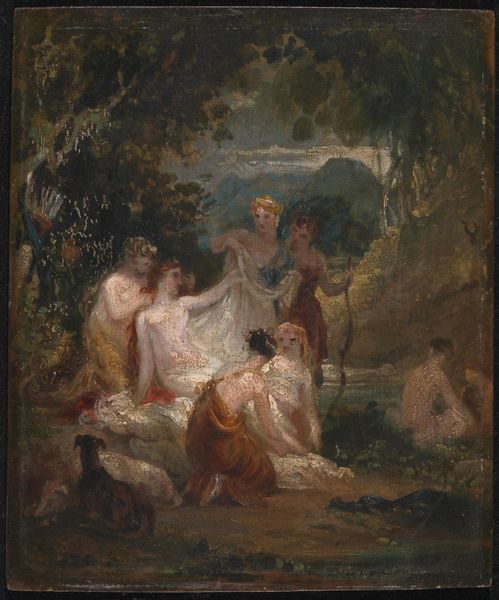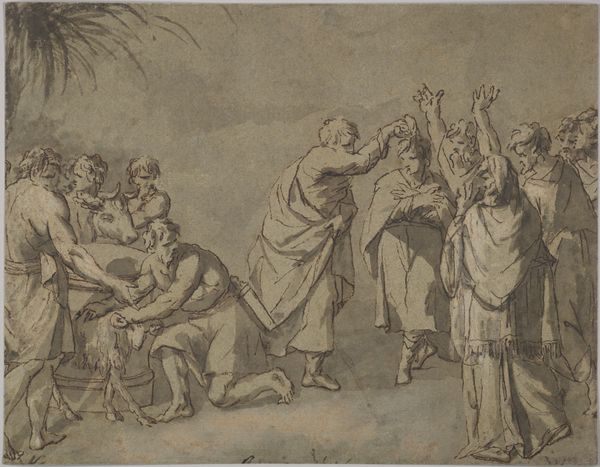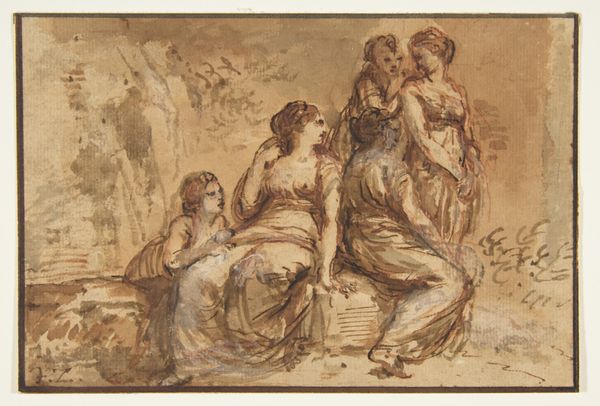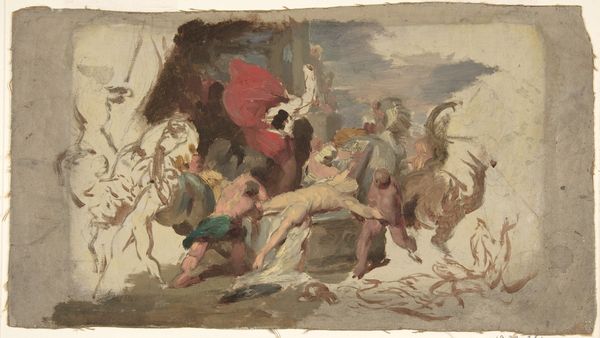
painting, fresco
#
portrait
#
neoclacissism
#
water colours
#
narrative-art
#
painting
#
figuration
#
fresco
#
oil painting
#
romanticism
#
history-painting
Dimensions: height 291.5 cm, width 405 cm, height 309 cm, width 418.5 cm, depth 8.6 cm
Copyright: Rijks Museum: Open Domain
Benjamin Wolff created this scene of Sophonisbe and Masinissa in paint, sometime between the late 18th and early 19th centuries. Though now damaged, we can still discern the artist's methods and the material qualities of the medium. Painting, of course, has a long history as both a fine art and a craft. The grinding of pigments, the blending of colors, the layering of brushstrokes, and the controlled application of varnish are all skills honed through years of practice. In this particular piece, the canvas support acts as a passive receptor, while the paint itself builds up an illusionistic space. What makes this painting compelling is the way it embodies both artistry and labor. The artist had to be knowledgeable about the properties of materials and the physical demands of the creative process, which gives the piece a certain gravitas. Looking closely at the painting, we can appreciate the artistry of its making, and how that making in turn deepens its meaning. By giving attention to materials, processes, and the social context of production, we can gain a richer understanding of the artwork.
Comments
No comments
Be the first to comment and join the conversation on the ultimate creative platform.

